📞+86 153 7530 2641 📧 hongjing.Wang@feichuncables.com

High-Flexibility AS/NZS 1802 Type 241SF Mining Cable: Longwall Shearer & Continuous Miner Power & Pilot Conductor Solution
Discover the AS/NZS 1802 Type 241SF mining cable designed for longwall shearers and continuous miners. This highly flexible cable features special stranding, PED ratio construction, semi-conductive screened cores, three earth cones, and an extensible pilot conductor—ideal for cable chains, monorails, DCB supplies, feeder pumps, and advanced machine monitoring in harsh underground conditions.
AS/NZS MINING CABLE
hongjing.Wang@Feichun
8/14/202513 min read
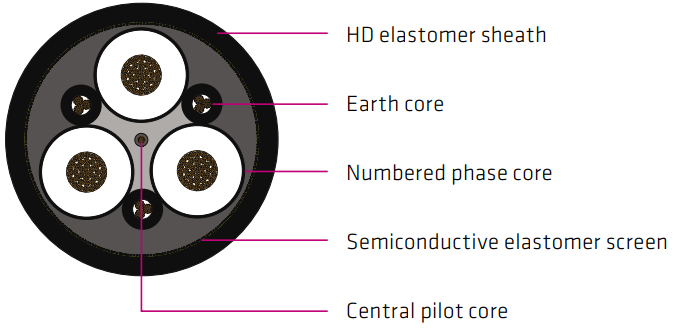

Introduction
Overview of the AS/NZS 1802 Standard and Its Relevance
The AS/NZS 1802 standard represents the pinnacle of mining cable engineering for Australia and New Zealand's underground operations. This rigorous specification ensures that cables can withstand the extreme conditions encountered in coal mines, metalliferous mines, and other underground excavations. The standard addresses critical safety requirements including flame retardancy, mechanical durability, and electrical performance under challenging environmental conditions.
Underground mining operations present unique challenges that surface applications rarely encounter. Cables must endure constant flexing, exposure to moisture, chemical contaminants, mechanical impact, and extreme temperature variations. The AS/NZS 1802 standard specifically addresses these demands, providing a framework for cables that maintain reliable performance in environments where failure could result in production losses, equipment damage, or safety hazards.
Purpose and Applications of Type 241SF Mining Cable
The Type 241SF mining cable represents a specialised solution engineered for applications requiring maximum flexibility whilst maintaining robust electrical performance. This cable is specifically designed for continuous miners, longwall shearers, feeder applications to pumps, and monorail systems supplying distribution control boxes (DCBs). The "SF" designation indicates its super-flexible construction, which allows for tight bending radii and exceptional durability under repeated flexing cycles.
The cable's design philosophy centres on providing reliable power transmission in dynamic applications where conventional cables would fail prematurely. Whether powering cutting heads on continuous miners, providing energy to longwall shearers traversing coal faces, or supplying auxiliary equipment through complex routing systems, the Type 241SF cable delivers consistent performance in the most demanding underground environments.


Design & Construction
Special Stranding and Lay-Up for Maximum Flexibility
The Type 241SF cable employs advanced stranding techniques that significantly enhance flexibility compared to conventional mining cables. The power conductors utilise fine wire stranding with optimised lay directions and pitches to minimise internal stress during bending. This special stranding configuration allows the cable to maintain electrical integrity even when subjected to tight bending radii that would damage standard constructions.
The lay-up design incorporates carefully calculated geometric relationships between conductors, screens, and protective elements. Each component is positioned to work synergistically, ensuring that mechanical stresses are distributed evenly throughout the cable structure. This approach prevents stress concentration points that could lead to premature failure in dynamic applications.
The manufacturing process involves precise control of stranding tensions and lay angles, ensuring consistent performance across the entire cable length. Quality control measures monitor conductor concentricity, screen continuity, and overall dimensional stability to guarantee that each cable meets the demanding requirements of underground mining operations.
PED Ratio and Tight Bending Radii Performance
The Power-to-Earth-Diameter (PED) ratio is a critical design parameter that influences the cable's ability to handle tight bending without compromising electrical or mechanical performance. The Type 241SF cable optimises this ratio through careful selection of conductor sizes, insulation thicknesses, and overall cable geometry.
Testing demonstrates that the cable can accommodate bending radii significantly smaller than conventional designs whilst maintaining screen continuity and insulation integrity. This capability is essential for applications such as cable chains on continuous miners, where space constraints demand exceptional flexibility without sacrificing safety or reliability.
The tight bending performance directly translates to operational advantages in confined underground spaces. Equipment can manoeuvre more effectively, installation becomes more straightforward, and maintenance access is improved. These benefits contribute to enhanced productivity and reduced operational costs.
Semi-Conductive Screened Power Cores
Each power conductor incorporates a semi-conductive screen that provides uniform electric field distribution around the conductor. This screening system prevents partial discharge phenomena that could degrade insulation over time, particularly important in the dusty, humid conditions typical of underground mining environments.
The semi-conductive material is carefully formulated to provide stable electrical properties across the cable's operating temperature range. The screen maintains intimate contact with the primary insulation, eliminating air voids that could initiate electrical breakdown. This construction significantly extends cable service life compared to non-screened alternatives.
The screening system also provides electromagnetic compatibility benefits, reducing interference between power conductors and sensitive pilot circuits. This characteristic becomes increasingly important as mining equipment incorporates more sophisticated electronic control systems requiring clean power supplies and reliable communication pathways.
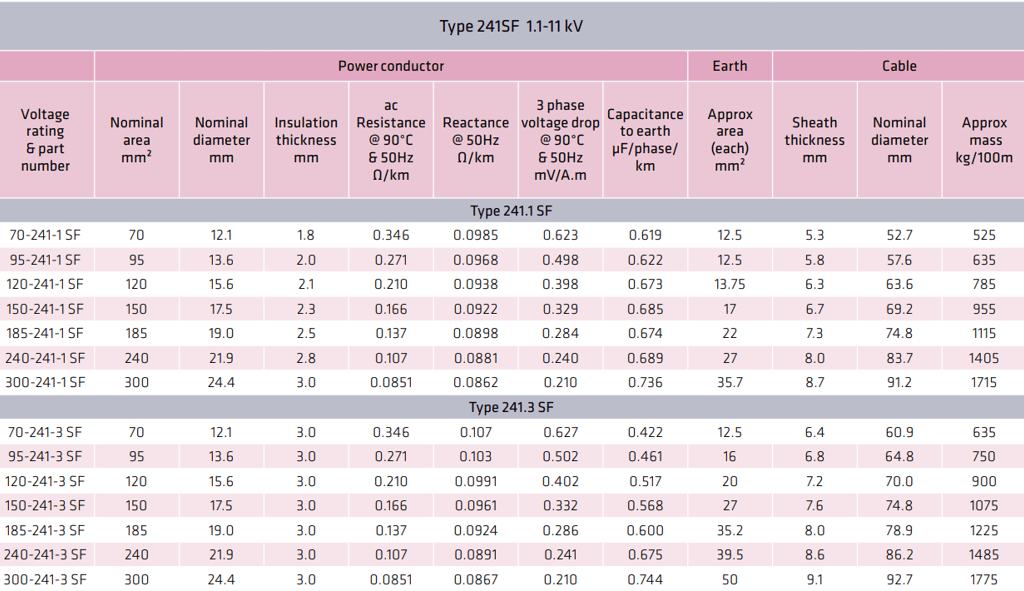

Pilot Conductor System
Three Earth Cones and Extensible Pilot Conductor
The Type 241SF cable incorporates three dedicated earth conductors strategically positioned within the cable construction. These earth conductors provide multiple current return paths, enhancing safety through redundancy whilst improving system grounding effectiveness. The earth conductors are sized appropriately for fault current handling whilst maintaining the cable's overall flexibility characteristics.
The central pilot conductor represents a key innovation in mining cable design. This conductor provides a communication pathway for modern mining equipment monitoring systems, enabling real-time transmission of operational data, diagnostic information, and control signals. The pilot conductor construction emphasises signal integrity whilst maintaining the mechanical flexibility essential for dynamic applications.
The extensible design allows the pilot conductor to accommodate the mechanical stresses associated with cable movement without compromising signal transmission quality. This capability is crucial for continuous miners and longwall shearers where the cable experiences constant flexing throughout operational cycles.
Modern Machine Monitoring Capabilities
Contemporary mining operations increasingly rely on sophisticated monitoring systems that track equipment performance, environmental conditions, and operational parameters in real-time. The Type 241SF cable's pilot conductor system supports these advanced monitoring capabilities, providing a reliable communication pathway between underground equipment and surface control systems.
The pilot conductor can carry various signal types including digital communications, analogue sensor data, and control signals. This versatility enables integration with diverse monitoring systems, from basic equipment status indicators to comprehensive condition monitoring platforms that analyse vibration, temperature, current consumption, and other critical parameters.
Data transmission capabilities support predictive maintenance programmes that can identify potential equipment issues before they result in failures. This proactive approach reduces unplanned downtime, extends equipment life, and improves overall operational efficiency whilst maintaining the safety standards essential in underground mining operations.
Integration with DCBs and Monorails
Distribution Control Boxes (DCBs) represent critical infrastructure components in modern underground mining operations. The Type 241SF cable's design specifically accommodates DCB integration requirements, providing reliable power transmission and communication pathways for these essential systems.
Monorail applications present unique challenges due to the dynamic nature of the installation and the need for reliable power transmission across moving components. The cable's flexibility and durability characteristics make it ideally suited for these applications, where conventional cables might fail due to repeated flexing and mechanical stress.
The pilot conductor system enables sophisticated control capabilities for monorail systems, supporting features such as position monitoring, speed control, and automatic safety interlocks. These capabilities enhance operational safety whilst providing the flexibility needed for efficient material transport in underground environments.
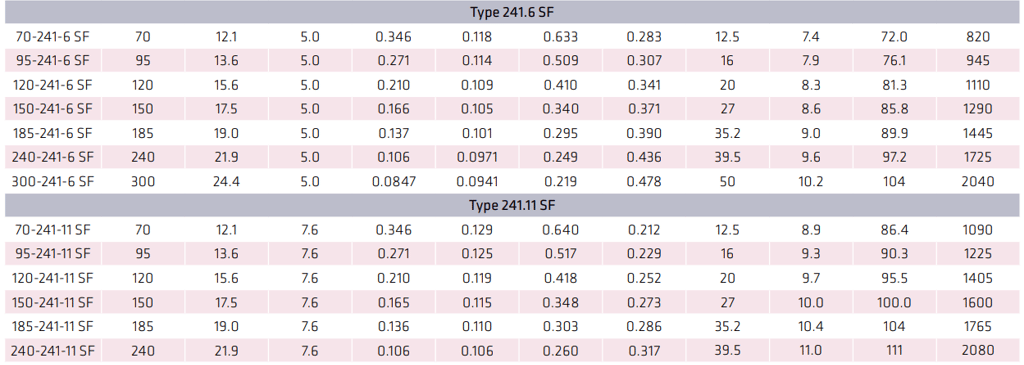

Operational Advantages
Durability in Arduous Underground Conditions
Underground mining environments subject cables to extreme conditions including mechanical impact, chemical exposure, moisture, temperature variations, and abrasive materials. The Type 241SF cable incorporates design features specifically engineered to withstand these challenges whilst maintaining reliable performance throughout extended service periods.
The HD elastomer sheath provides exceptional resistance to chemical attack, mechanical damage, and environmental degradation. This protective system maintains its integrity even when exposed to the harsh chemicals commonly encountered in mining operations, including cleaning agents, hydraulic fluids, and naturally occurring minerals that could damage conventional cable constructions.
Temperature performance spans from -25°C to +90°C, accommodating the extreme variations encountered in underground operations. This range ensures reliable operation from the coldest winter surface conditions through to the elevated temperatures found in deep underground workings where geothermal effects become significant.
Continuous Miner and Longwall Shearer Compatibility
Continuous miners represent one of the most demanding applications for mining cables due to the constant movement, high power requirements, and confined operating spaces. The Type 241SF cable's design specifically addresses these challenges through optimised flexibility, robust construction, and reliable electrical performance under dynamic loading conditions.
The cable's ability to handle repeated flexing cycles without degradation makes it particularly suitable for continuous miner applications where the cable experiences constant movement as the machine advances through the coal face. Traditional cables might develop insulation cracking or conductor fatigue under these conditions, but the Type 241SF construction maintains integrity throughout extended operational periods.
Longwall shearer applications present similar challenges with the additional complexity of extended travel distances and higher power transmission requirements. The cable's electrical characteristics support efficient power transmission across the substantial distances involved whilst maintaining the mechanical durability needed for the constant movement inherent in longwall operations.
Feeder Cable Applications to Pumps and Auxiliary Equipment
Underground mining operations require numerous auxiliary systems including dewatering pumps, ventilation fans, conveyor systems, and material handling equipment. The Type 241SF cable serves as an excellent feeder solution for these applications, providing reliable power transmission in challenging routing configurations.
The cable's flexibility advantages become particularly apparent in feeder applications where complex routing around existing infrastructure is required. Tight bends, confined spaces, and irregular pathways that would challenge conventional cables are easily accommodated by the Type 241SF construction without compromising electrical performance or mechanical integrity.
Pump applications often require cables to traverse wet environments where conventional constructions might experience premature failure due to water ingress or sheath degradation. The Type 241SF cable's water resistance capabilities ensure reliable operation even in immersion conditions or areas subject to temporary water coverage.
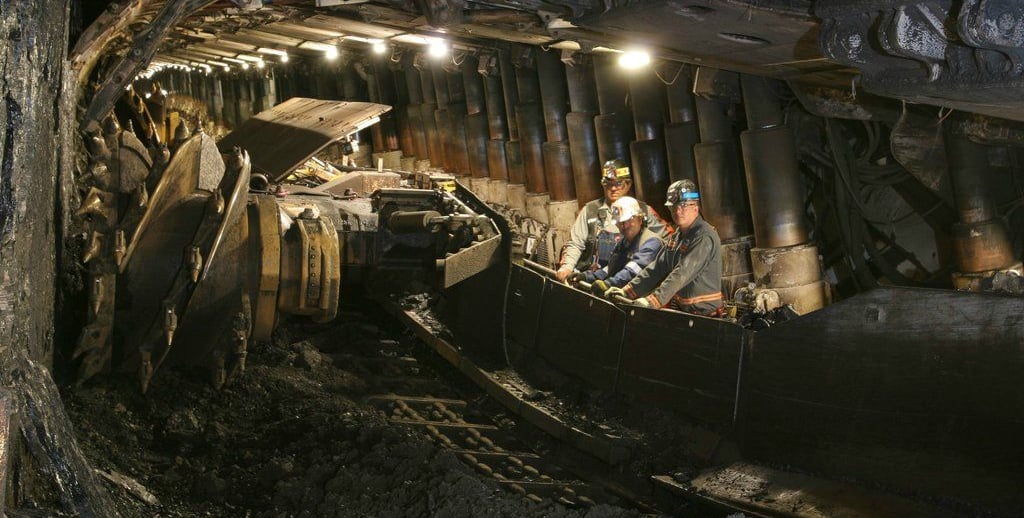

Installation & Handling
Recommended Minimum Bending Radius Guidelines
Proper installation practices are essential for realising the full potential of the Type 241SF cable's design advantages. Minimum bending radius guidelines ensure that the cable's flexibility benefits are utilised without exceeding design limits that could compromise long-term performance.
The recommended minimum bending radius varies with cable size and voltage rating, typically ranging from 8 to 12 times the cable's overall diameter during installation and 6 to 10 times for operational conditions. These guidelines balance the cable's exceptional flexibility with the need to maintain electrical and mechanical integrity throughout the service life.
Installation procedures should incorporate appropriate cable support systems, protection from sharp edges, and consideration of thermal expansion characteristics. Proper installation techniques not only ensure optimal performance but also maximise the cable's service life, providing better return on investment for mining operations.
Cable Chain and Monorail Support Systems
Cable chain applications represent one of the most demanding installation configurations for mining cables. The Type 241SF cable's design specifically accommodates these applications through enhanced flexibility and fatigue resistance characteristics that maintain performance under constant motion conditions.
Support system design should consider the cable's bending characteristics, ensuring that support points are positioned to prevent stress concentration whilst allowing free movement throughout the operational cycle. Proper lubrication and protection systems extend cable life whilst maintaining the flexibility advantages essential for these dynamic applications.
Monorail installations require careful consideration of cable routing, support methods, and protection from mechanical damage. The Type 241SF cable's robust construction provides excellent resistance to the environmental challenges encountered in monorail applications whilst maintaining the electrical performance needed for reliable equipment operation.
Maintenance and Inspection Practices
Regular maintenance and inspection programmes are essential for maximising cable service life and ensuring continued safe operation. Visual inspections should focus on sheath condition, connector integrity, and signs of mechanical damage or environmental degradation that could compromise performance.
Electrical testing programmes should include insulation resistance measurements, earth continuity verification, and pilot conductor signal integrity assessments. These tests provide early warning of developing problems whilst confirming that the cable continues to meet safety and performance requirements.
Preventive maintenance practices include proper cable handling during equipment maintenance, protection from mechanical damage, and environmental protection measures that extend service life whilst maintaining operational reliability.
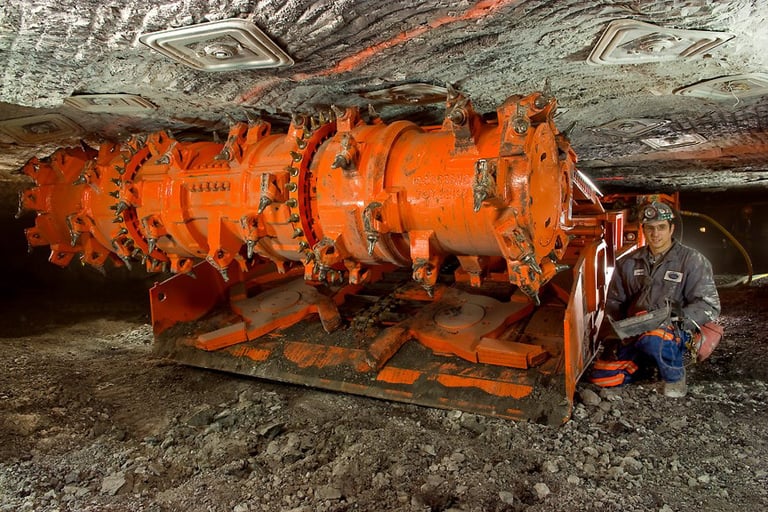

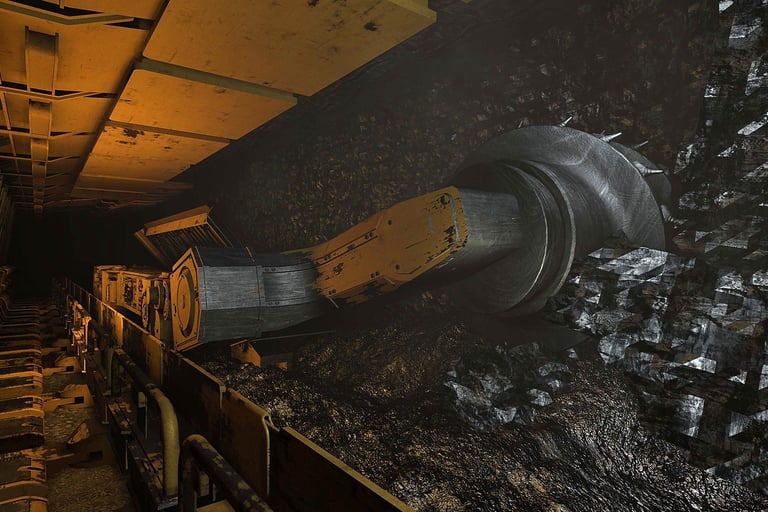

Technical Specifications Summary
Voltage Rating, Conductor Sizes, and Insulation Thickness
The Type 241SF cable is available in voltage ratings from 1.1/1.1 kV through 11/11 kV, accommodating the full range of underground mining power distribution requirements. Conductor sizes span from 70 mm² to 300 mm², providing options for applications from auxiliary equipment to high-power mining machinery.
Insulation thickness varies with voltage rating, ranging from 1.8 mm for 1.1 kV applications to 7.6 mm for 11 kV systems. This graduated approach ensures optimal electrical performance whilst maintaining the flexibility characteristics essential for dynamic applications. The insulation system incorporates proven materials and construction techniques that provide reliable performance throughout extended service periods.
The range of available configurations enables designers to select the optimal cable specification for specific applications, balancing electrical performance, mechanical characteristics, and cost considerations to achieve the best overall solution for each installation.
Electrical Characteristics (Resistance, Reactance, Capacitance)
The cable's electrical characteristics are optimised for efficient power transmission whilst maintaining the flexibility and durability required for mining applications. AC resistance values at 90°C and 50 Hz range from 0.346 Ω/km for 70 mm² conductors to 0.0847 Ω/km for 300 mm² conductors, providing efficient power transmission with minimal losses.
Reactance characteristics support effective system design and protection coordination. Values range from approximately 0.087 to 0.129 Ω/km depending on conductor size and cable construction, enabling accurate system modelling and optimised protective relay settings.
Capacitance to earth varies with voltage rating and construction, ranging from approximately 0.212 to 0.744 μF/phase/km. These values support proper system design whilst maintaining the screening effectiveness essential for reliable operation in electrically noisy mining environments.
Mechanical Data (Diameter, Mass, Sheath Thickness)
Overall cable diameter ranges from approximately 52.7 mm for the smallest configuration to 111 mm for the largest, reflecting the balance between electrical performance and mechanical handling characteristics. These dimensions accommodate standard cable installation methods whilst providing the robustness needed for mining applications.
Cable mass varies from 525 kg/100m to 2080 kg/100m, reflecting the substantial construction required for reliable mining service. Despite the robust construction, the cable maintains exceptional flexibility characteristics that facilitate installation and operation in confined spaces.
Sheath thickness increases with cable size and voltage rating, providing appropriate mechanical protection whilst maintaining flexibility. The HD elastomer sheath material provides excellent resistance to the environmental challenges encountered in underground mining operations whilst maintaining long-term durability.
Compliance & Approvals
AS/NZS 1802 Flame and Fire Behavior
The Type 241SF cable meets the rigorous flame and fire behaviour requirements specified in AS/NZS 1802, providing essential safety characteristics for underground mining applications. Fire retardant properties ensure that the cable will not propagate flames in the event of an electrical fault or external fire source, critical for maintaining safe egress routes in underground operations.
Testing procedures verify that the cable meets specific criteria for flame spread, heat release, and toxic gas emission under controlled conditions that simulate potential fire scenarios in underground environments. These requirements ensure that the cable contributes to overall mine safety whilst maintaining the performance characteristics needed for reliable operation.
Compliance with AS/NZS 1802 flame requirements provides confidence that the cable meets the safety standards essential for underground mining operations whilst delivering the electrical and mechanical performance needed for demanding applications.
International Mining Cable Standards Alignment
The Type 241SF cable design incorporates international best practices for mining cable construction, ensuring compatibility with global mining industry requirements whilst meeting specific Australian and New Zealand regulatory requirements. This approach provides flexibility for mining companies operating in multiple jurisdictions whilst maintaining consistent safety and performance standards.
Design standards alignment facilitates equipment compatibility and maintenance practices across international operations whilst ensuring that the cable meets the specific environmental and operational challenges encountered in Australian and New Zealand mining operations.
International standards alignment also supports technology transfer and best practice sharing across the global mining industry, contributing to improved safety and operational efficiency whilst maintaining the specific characteristics needed for local operating conditions.
Manufacturer Certifications and Testing
Comprehensive testing programmes verify that each cable meets the demanding requirements of AS/NZS 1802 and specific application requirements. Testing includes electrical performance verification, mechanical durability assessment, environmental resistance evaluation, and fire behaviour confirmation.
Quality management systems ensure consistent production quality whilst providing traceability throughout the manufacturing process. These systems support predictable performance characteristics and enable rapid problem resolution in the unlikely event of performance issues.
Certification processes provide documented evidence of compliance with relevant standards whilst supporting mining company safety and risk management programmes. This documentation enables confident specification and installation of the cable in critical mining applications.


Conclusion
Key Benefits of AS/NZS 1802 Type 241SF Cable
The Type 241SF mining cable represents a significant advancement in underground mining cable technology, combining exceptional flexibility with robust electrical performance and comprehensive safety features. The cable's design specifically addresses the challenging requirements of continuous miners, longwall shearers, and auxiliary equipment applications whilst providing the durability needed for extended service in harsh underground environments.
Key advantages include superior flexibility enabling tight bending radii, comprehensive screening for electrical performance and EMC, integrated pilot conductor for modern monitoring systems, and robust construction providing exceptional durability in arduous conditions. These characteristics combine to deliver a cable solution that enhances operational efficiency whilst maintaining the safety standards essential for underground mining operations.
The cable's proven performance in demanding applications demonstrates its capability to meet the evolving needs of modern mining operations whilst providing the reliability and safety characteristics that mining companies require for critical infrastructure applications.
Recommended Use Cases and Best Practices
The Type 241SF cable is ideally suited for applications requiring exceptional flexibility combined with reliable electrical performance. Primary applications include continuous miner power supplies, longwall shearer installations, feeder cables for pumping equipment, monorail power systems, and DCB supply applications where flexibility and durability are essential.
Best practices include proper installation techniques that utilise the cable's flexibility advantages whilst respecting minimum bending radius guidelines, implementation of appropriate support systems for dynamic applications, and regular inspection and maintenance programmes that ensure continued safe and reliable operation.
Application-specific considerations should address the unique requirements of each installation whilst leveraging the cable's design advantages to optimise system performance, reliability, and safety throughout the operational life cycle.
Future Developments and Product Variations
The Type 241SF cable design provides a foundation for future developments that will address the evolving needs of underground mining operations. Potential enhancements include expanded pilot conductor capabilities for advanced monitoring systems, improved environmental resistance for specialised applications, and optimised constructions for specific equipment types or operational conditions.
Ongoing development programmes focus on incorporating new materials and construction techniques that further enhance performance whilst maintaining the proven reliability characteristics that have established the Type 241SF cable as a preferred solution for demanding mining applications.
The cable's design philosophy of combining exceptional flexibility with comprehensive safety features provides a platform for continued innovation that will support the mining industry's ongoing evolution toward more sophisticated, efficient, and safe underground operations.
Frequently Asked Questions
Q: What makes the Type 241SF cable different from standard mining cables? A: The Type 241SF features special stranding and lay-up designed for maximum flexibility, allowing for tighter bending radii than conventional mining cables. It also includes semi-conductive screened cores and an integrated pilot conductor system for modern machine monitoring applications.
Q: Can this cable handle continuous flexing in cable chain applications? A: Yes, the Type 241SF is specifically designed for dynamic applications including cable chains on continuous miners. The special stranding and optimised construction provide exceptional fatigue resistance under repeated flexing cycles.
Q: What environmental conditions can the Type 241SF cable withstand? A: The cable operates reliably in temperatures from -25°C to +90°C, provides excellent resistance to chemical exposure, handles mechanical impact well, and can withstand water immersion or temporary coverage. It's also suitable for direct exposure to solar radiation and weather conditions.
Q: How does the pilot conductor enhance mining operations? A: The central pilot conductor enables real-time transmission of operational data, diagnostic information, and control signals, supporting modern machine monitoring systems and predictive maintenance programmes that reduce downtime and improve safety.
Q: What voltage ratings are available for the Type 241SF cable? A: The cable is available in voltage ratings from 1.1/1.1 kV up to 11/11 kV, with conductor sizes ranging from 70 mm² to 300 mm², accommodating various mining equipment power requirements from auxiliary systems to high-power machinery.
How to Reach Us
Get in Touch
SiteMap
Product Catalogue
Reeling Cable
Festoon Cable
Shore Power Cable




Scan to add us on WeChat
